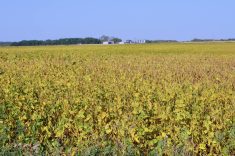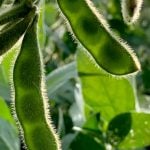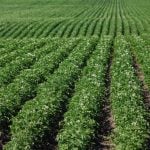As long as there are gains in the soy complex at the Chicago Board of Trade, canola prices will continue to find support — and that’s been fuelling the rally in canola this week.
Of the major edible oils that influence canola, Chicago soyoil is the most prevalent. As said before, where bean oil goes, canola follows — eventually.
Sharp increases across the soy complex on Aug. 27 spilled over into canola, but as usual, the latter’s reaction was somewhat behind. While it can be frustrating to some for canola to finally get there, when the price comes down, it too lags behind the pace set by Chicago.
Read Also

Manitoba sees cabbage seed pod weevil surge
Cabbage seed pod weevil has crossed into true canola pest territory in Manitoba this year, following years of minimal population counts
This week, canola prices for the November contract on ICE Futures rose $7.30 per tonne, and have knocked on the gate of $500 per tonne during trading sessions.
Oddly, it’s demand from China that’s propelling this rally — but not for any sudden, unexpected massive purchases of canola. Rather, China has been ramping up its purchases of U.S. soybeans, with the goal of acquiring 40 million tonnes by the end of 2020.
As China continues to buy a mere fraction of the canola it did in 2018, its U.S. bean purchases are benefiting Canadian farmers.
Besides the machinations of the CBOT soy complex, other factors have also been supportive of canola, such as European rapeseed. Following a spout of declines earlier this week, Malaysian palm oil also found traction to provide its share of support.
However, the looming question is canola yields on the Prairies. Prolonged dry conditions, especially in Saskatchewan and Manitoba, are widely believed to have cut yields. While they should remain quite plentiful, they likely won’t be the big numbers projected a month ago.
Meanwhile, yields in Alberta are thought to have rebounded somewhat in the wake of horribly wet conditions in its northern growing areas and dry conditions in the southern half.
There will be some indication of canola production in Statistics Canada’s report on principal field crops on Aug. 31. Although the surveys for the report are up to a month old, there will be some insight of what to expect when harvest really ramps up on the Prairies.
As one trader put it, “we’ll have to trim a little bit off for those numbers for Saskatchewan and Manitoba, and add a little bit in for Alberta.”




















